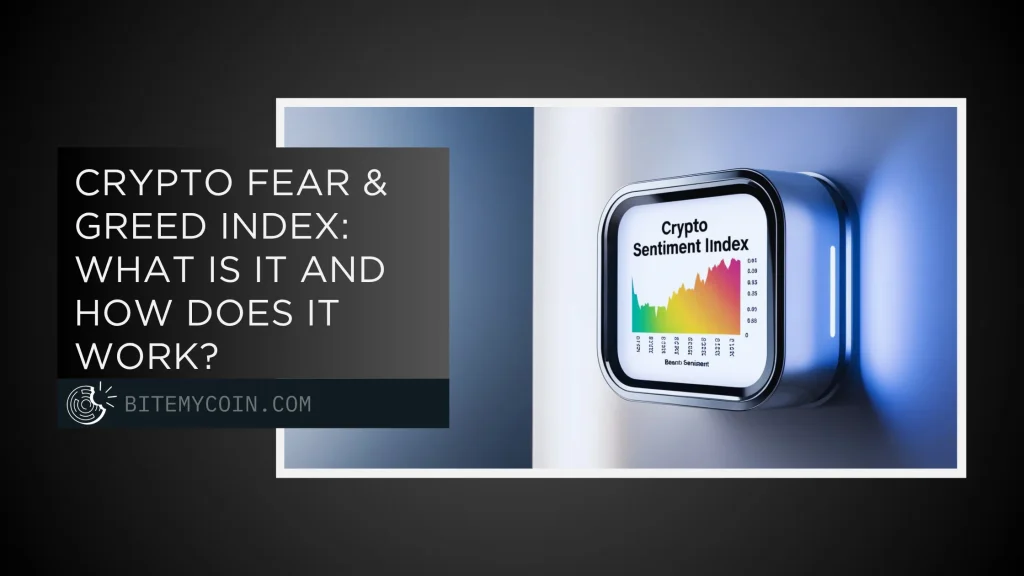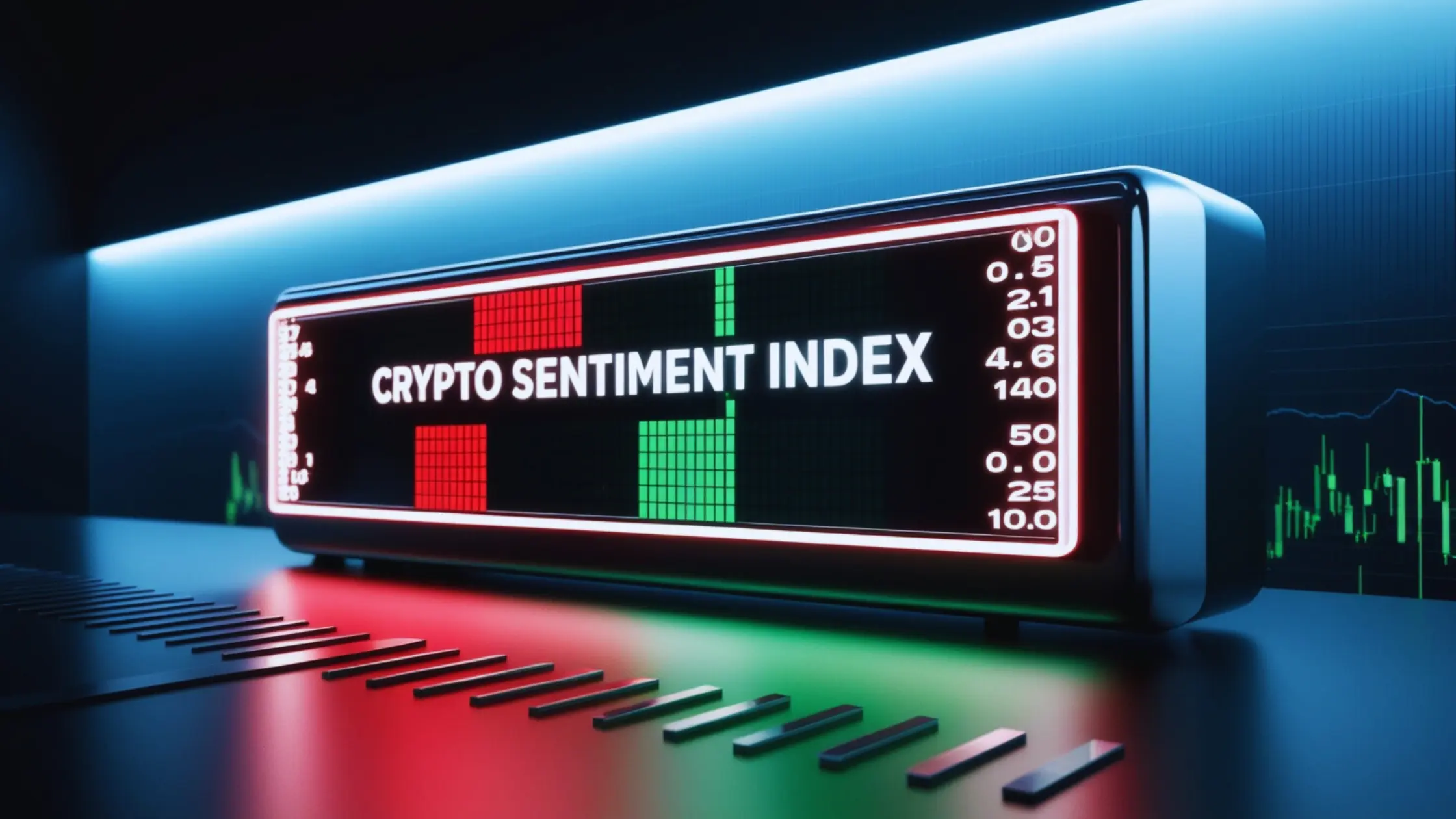Crypto Fear & Greed Index: What Is It And How Does It Work?

Crypto market, from its inception, has been showing dramatic shifts in the candles, making it extremely difficult to understand the ongoing market scenario and to predict the upcoming chart movements. However, the market provides a solution for this to an extent through the Fear & Greed index, an indicator that helps to understand the driving forces behind the movements.
This article provides a detailed guide to the Fear & Greed Index, delving into its history, applications, and trustworthiness. Apart from examining how it works, the article also attaches a history of the index.
What is Fear & Greed Index? How to Read It?

Fear & Greed Index is a score that ranges from 0 to 100 to determine the overall sentiment of the crypto market. It changes daily according to the market’s emotional behaviour. The score, decided by the analysis of volatility, trading volume, market sentiment, and other metrics, is divided into:
0-24: Extreme Fear
This value usually signals a pessimistic panic in the market due to the worries triggered by red candles in the charts, negative news, and economic uncertainty. Usually, in these conditions, investors will be skeptical about the asset and tend to move into safer investment options. However, certain traders consider it a buying opportunity due to the undervaluation of the asset.
For an asset with strong fundamentals, each extreme fear phase is an investment opportunity. When most people are scared, it will automatically heighten the selling pressure, creating a dip, which will be filled in a later extreme opposite market condition. Extreme fear is generally denoted with orange or red colour, and the minimum value 0 represents the maximum possible fear, which has not been reached.
25-49: Fear
The crypto market tends to navigate between these values in a usual bear market, with investors exercising caution without panicking. There will be fear, uncertainty, and doubt regarding whether the market will fall into extreme fear or not.
50-74: Greed
This is the phase where the market exhibits optimism with strong buying momentum in both the high-risk assets and the assets with strong fundamentals. Investors start accumulating assets, increasing the trading activity and demand, and also contributing to the overvaluation.
75 – 100: Extreme Greed
This is an euphoric phase where the entire market shows lengthy green candles that result in FOMO (Fear of Missing Out). Various tokens will touch their all-time high, and the investors will not be concerned much about the risks. However, the aggressive buying behaviour and overvaluation of assets might also result in the bursting of the crypto bubble at a totally unexpected point.
It is worth noting that extreme greed can occur in a bear market where short-term surges unexpectedly happen. Pump and dump schemes also create this situation.
How to Use Fear & Greed Index?
While Crypto Fear & Index can be used in ways said above, it works well only by integrating other indicators such as support and resistance levels, Relative Strength Index (RSI), Moving Averages (MA), and Awesome Oscillator. All these together can help you determine entry points, exit points, and underlying risks.
How to Calculate Fear & Greed?
Although irrational forces are largely shaping the market behaviour, certain things rely on measurable data such as trading volume, dominance, trends, and surveys. Analysis of these indicators is used to determine the Fear & Greed Index. Let us take a closer look.
- Volatility: Fluctuations in the market can be used as a sign of FUD. Extreme price swings usually indicate fear.
- Trading Activity: When the trading volume rises compared to the long-term momentum, the market is getting greedy.
- Market Sentiment: Generally, market sentiment, the overall mood of the market, is determined through various technical indicators and online platforms.
- Bitcoin Dominance: It calculates the difference between Bitcoin’s market share and altcoin market share. A rising BTC dominance indicates fear.
- Online Trends: Tools like Google Trends will be used to track crypto trends. An increase or decrease in certain search terms will reveal the market’s fear and greed.
History and Growth of the Fear & Greed Index
The idea for a Fear & Greed Index was formed in the aftermath of the 2008 financial crisis and the European debt crisis. In 2009, when the market bottomed, various experts and journalists were trying to figure out how to measure and understand the investors’ reaction to the market movements.
The words fear and greed were already popular among the investors and the media as two opposing emotional states of the market. Borrowing these names, the journalists from CNN Business (then called CNNMoney), with the help of market experts, came up with a barometer-type reading model that utilizes various market data.
With the inspiration from the “fear gauge” of the 1990s, they chose seven key indicators, including the VIX, market momentum, options contracts, and demand for safe-haven assets like Treasury bonds, to create an index. They released it in spring 2012, resulting in praise from the trading community.
Influenced by this, the Crypto Fear & Greed Index was developed by the website alternative.me by analyzing indicators such as volatility, market sentiment, trading volume, social media, and surveys. It quickly became popular, transforming into a valuable tool for individual crypto investors and corporate institutions to understand the market.
Also Read: What Is MACD, and How To Use It In Crypto Trading?
Final Thoughts
More than a mere number, the Fear & Greed Index is a reflection of the mentality of traders toward an asset. For an individual trader, it helps to become aware of their own mind’s emotions. However, the index is not the final word to determine the market’s current behaviour and potential movements.
All trading strategies come with inherent risks due to the highly unpredictable nature of the crypto market. That’s why it is important to do your own deep research before clinging to numbers. Always DYOR!
Crypto & Blockchain Expert
